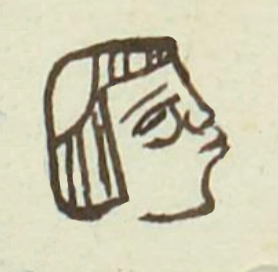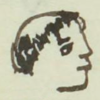Huexotzincatl (MH605v)
This black-line drawing of the simplex glyph for the personal name or ethnic identifier (“Huexotzincatl") shows the head of a man in profile, looking toward the viewer's right. His eye is open. His lips appear to be pursed. He has a bald spot on the crown of his head, which may be an indicator of his ethnicity.
Stephanie Wood
The man could be balding, or perhaps he is involved with the Franciscan monastery in Huexotzincatl, and his head has been shaved? If the latter, this could suggest Spanish colonial influence. A simplex glyph that refers to a person from Chalco (see below) has a similar balding pattern (or a shaved head), and Chalco also had a Franciscan monastery.
Stephanie Wood
juā vexotzincatl
Juan Huexotzincatl
Stephanie Wood
1560
Jeff Haskett-Wood
etnicidades, afiliación del altepetl, calvo or cabeza afeitada

Huexotzincatl, a person from Huexotzinco, an ethnicity, https://nahuatl.wired-humanities.org/content/huexotzincatl
-catl (affiliation suffix), https://nahuatl.wired-humanities.org/content/catl
una persona de Huexotzinco, una etnicidad
Stephanie Wood
Matrícula de Huexotzinco, folio 605v, World Digital Library, https://www.loc.gov/resource/gdcwdl.wdl_15282/?sp=293st=image.
This manuscript is hosted by the Library of Congress and the World Digital Library; used here with the Creative Commons, “Attribution-NonCommercial-ShareAlike 3.0 License” (CC-BY-NC-SAq 3.0).






